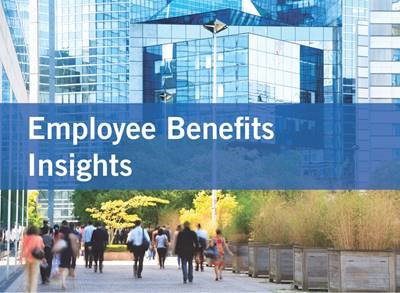401(k) Compliance Check #5: Keeping 401(k) Participants Out of the Lost and Found Box

In last month’s 401(k) Compliance Check, we discussed the variety of typical notices that a 401(k) plan must send to plan participants. In this month’s Compliance Check, we focus on the issue of how to handle a situation where the 401(k) plan is unable to reach a plan participant, i.e., “missing participants.”
Why is This Topic Important?
As a 401(k) plan sponsor, you have numerous fiduciary responsibilities. However, from the Department of Labor’s (DOL’s) perspective, there is perhaps none more fundamental than ensuring that participants receive timely distributions from their 401(k) plan accounts. These distributions may be in the form of payments at normal retirement age, small balance cashouts, or required minimum distributions.
Over the last several years, the DOL has increased its compliance enforcement activities in the area of missing participants. In particular, through its audit process, the DOL has pressured plan sponsors to locate missing participants entitled to receive 401(k) plan distributions, or face substantial penalties. To encourage plan sponsors to take proactive steps to locate missing participants, the DOL issued guidance on locating missing participants in the form of “Best Practices.” Not every element of the DOL’s guidance will be practicable or appropriate. However, your implementation – and documentation – of those that are will show that you are serious about this compliance issue if you become subject to a DOL examination.
Click here more information on the DOL’s guidance.
But Do We Really Have a Problem?
You may very well have a missing participant problem if you have noticed former employees who have reached retirement age, but have not requested or started receiving plan distributions. Another sign of a potential problem is inaccurate or incomplete contact information in your files, whether in electronic or paper form. Lastly, you may have a problem if you are accumulating more than a few returned mail items and uncashed checks.
It Takes a Village
As the adage goes, it takes a village . . . . The same approach applies to implementing practices to identify missing participants. Depending upon the size of your company and staffing, it may be necessary for benefits, human resources, payroll, administrative services (e.g., mailroom services), and information technology personnel, along with the plan’s record keeper, to ensure that former employees’ contact information is current. Changes to contact information must be coordinated and shared throughout the company and to/from the plan’s record keeper.
Examples of the DOL’s Best Practices
The DOL has identified nearly 30 far-ranging best practices for plan sponsors seeking to address the missing participant issue. Based on the DOL’s best practices guidance, you may decide to consider the following:
“Preventative” Measures
- Contact current and retired participants on a periodic basis to confirm or update their contact information, such as home and business addresses, telephone numbers (including cell phone numbers), and next of kin/emergency contact information.
- During the employee exit processes, confirm or update contact information and stress the importance of ensuring that the plan has accurate contact information at all times.
- Check other benefit plan and company records for participant contact information. For example, it is possible that payroll records or the group health plan may have current information.
- When furnishing plan information (such as summary annual reports, participant statements, and summaries of material modifications) include language (perhaps in bold, or highlighted) that prompts the recipient to provide updated contact information.
Tips:
- Make the process simple to act upon – e.g., provide a toll-free phone number, email address of contact person, internal web portals, or forms with self-addressed envelopes.
- Be sure that there is a designated point person responsible for sharing updated contact information to the person in charge of making updates in the benefits, human resources, and payroll departments, as well as to the plan’s record keeper.
- Identify a company representative (perhaps someone responsible for internal controls compliance) to periodically monitor or audit the process of updating contact participant information to ensure that such information is correct and consistent throughout the company and with the plan’s record keeper.&
- Require that the 401(k) plan service representatives responding to participant questions include, as part of their script, a request to confirm contact information. This can be especially important if the participant’s 401(k) balance includes amounts transferred from an acquired/merged employer’s plan. Similarly, the accompanying website could be set up such that a participant would be required to confirm contact information before proceeding.
Tip:
- Consider negotiating a term in the record keeper services agreement that addresses its role and obligation to cooperate in the missing participant process (mindful, of course, that locating missing participants is ultimately the company’s responsibility).
- Consider negotiating a term in the record keeper services agreement that addresses its role and obligation to cooperate in the missing participant process (mindful, of course, that locating missing participants is ultimately the company’s responsibility).
- Establish a process among the company’s administrative services and human resources/benefits departments, along with the plan’s record keeper, to promptly investigate undelivered mail to plan participants and uncashed distribution checks.
Tips:
- Delegate a company representative to be responsible for reviewing a list of uncashed distribution checks, and taking action to locate the intended recipient in accordance with the company’s missing participation location practice.
- Identify a different company representative to periodically monitor or audit the process.
Out of the Box Ideas (“Handle with Care”)
- Using social media to contact individuals may be helpful. However, you should be aware that social media contact information may not be reliable. There is no guarantee that your message will reach the intended receiver. Even if the message is received, the individual may ignore it as a scam. Or, a bad actor may receive the message and fraudulently seek to receive the missing participant’s plan distribution.
- Contact beneficiaries or emergency contacts on file with the company (e.g., spouse or children). Consider that there are circumstances where an individual does not want to be found – perhaps for reasons of personal safety. Consequently, these individuals may be reluctant to share contact information even if you suggest that they serve as an intermediary. Moreover, someone identified as a beneficiary or emergency contact may not necessarily have the best interests of the missing participant in mind and may attempt to receive plan distributions fraudulently.
Last Ditch Efforts
- If participants are nonresponsive over a period of time, try obituary or death searches (e.g., Social Security Death Index) to determine if the participant has died. If so, you should try to locate any designated beneficiaries, if needed.
- Use a commercial locator service, credit reporting agency, or online public record databases (such as those for real estate taxes) to locate missing participants. Be aware that some of these services and databases may charge for their services.
Regardless of which of the DOL’s best practices you find to be practicable or appropriate, be sure to document them. And of course, once documented, follow them. By implementing some, or all, of these practices, not only will you be more likely to find missing participants (or better yet, prevent the problem altogether), you will have evidence of your good faith compliance in the event that the DOL stops by for an examination.
 |
As part of Foley’s ongoing commitment to provide legal insight to our clients and colleagues, our Employee Benefits and Executive Compensation Group has a monthly newsletter we call “Employee Benefits Insights,” where we provide you with updates on the most recent and pressing matters concerning employee benefits and other related topics. Click here or click the button to the left to subscribe. |
